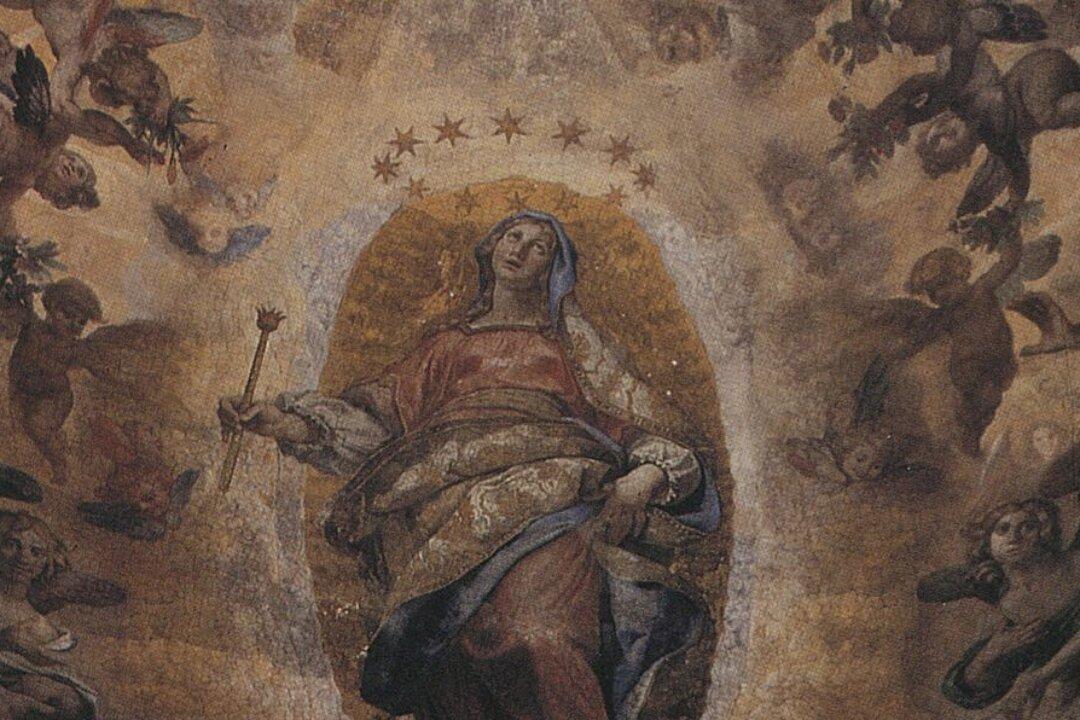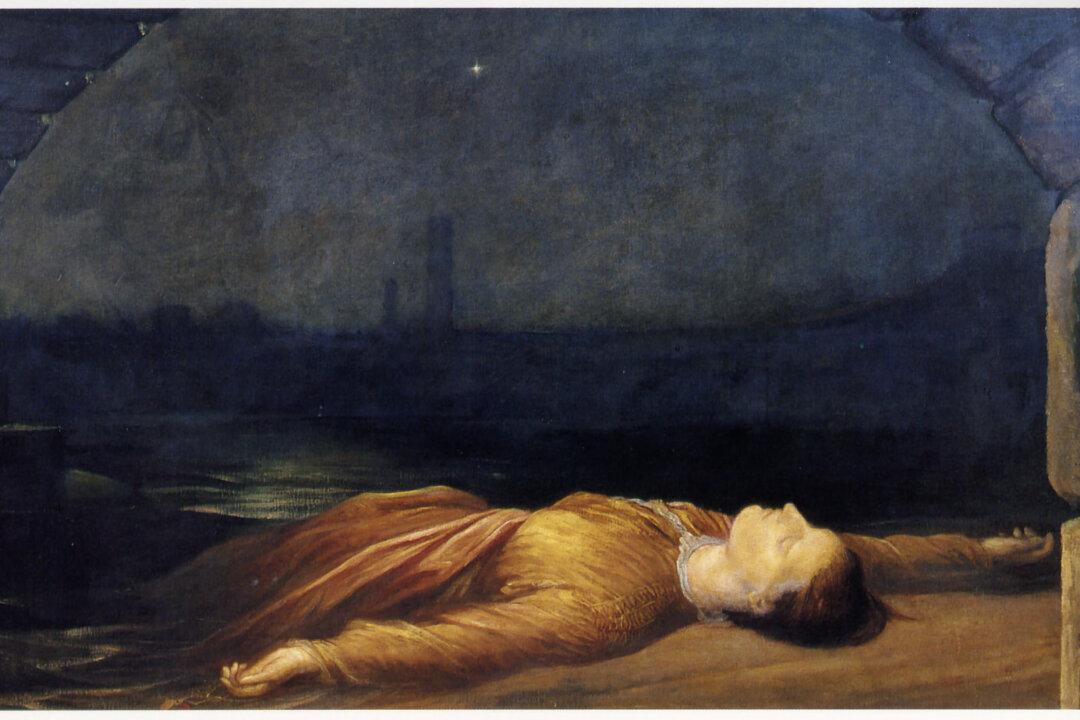In a domed chapel in the Papal church of Santa Maria Maggiore in Rome, gazing up, one sees depicted the Virgin Mary, standing atop a crescent moon. To either side of her, a company of Apostles and a host of celebratory angels watch her with awe.
Curiously, the Virgin does not stand upon the more conventionally depicted perfectly orbed sphere. Her feet rather rest upon the puckered and cratered surface that could only have been observed through the lens of a telescope.
This fresco, painted between 1610 and 1612, was the last major commission of the once famed Florentine painter Ludovico Cardi—nicknamed Cigoli after his Tuscan hometown—aesthetically embodying, the way the macrocosm of religion and science could be perceived as speaking one and the same language within the culture of early 17th Century Europe.
Only two years prior to the unveiling of the domed ceiling, Cigoli’s close friend Galileo Galilei had published to much acclaim his astronomical treatise Sidereus Nuncius or the The Starry Messenger. Included in this work were Galileo’s own drawings of the telescopically observed phases of the moon (Sobel, 1999).
The astronomer was actually on very intimate terms with all the famous names that made up the contemporary world of Florentine art from which Cigoli came. Along with Cigoli and his compatriots, he was also a member of the Florentine Academy of Design, and recognized by his fellow members as a fine draughtsman (Reeves, 1997).
In truth, it is actually almost certain, that Galileo’s training in the art of chiaroscuro— the artistic understanding of the way light and shadow falls on objects—enabled him to deduce the moon’s physical nature, ultimately naming its round puckered shapes, craters, after the similarly shaped wine vessels of antiquity (Cooke, 1996).
Contemporaneous to Galileo; the Englishman Thomas Harriet—who had not studied in-depth these same artistic principles—saw through the telescope the “strange spottedness” of the moon, but did not conclude that what he observed was the convexity of upraised mountain plains, or the concavity of valleys cast under shadow (Cooke, 1996)
For centuries before modern science, the domed interior of churches had been built with the intent of mirroring both the shape and nature of the heavens. Following on from this premise, the 1609 publication of Kepler’s first law of planetary motion—that the orbit of every planet is an ellipse—coincided with the emergence of elliptically planned buildings and garden features, as a specific innovation of 17th century Baroque architectural design (Badillo, 2010 and Hatch, 2002).
One of the most dramatic examples of this was the architect Francesco Borromini, whose “heterodox classicism” most blatantly absorbed this elliptical schema—very plausibly based upon Kepler—in both the internal geometry and overall ovoid plan of the Baroque churches he built in Rome, of San Carlo alle Quattro Fontane and San Ivo della Sapienza (Badillo, 2010, Hatch, 2002 and Peterson, 2011).
European Astronomy in China
Yet it was not only the cosmological understanding of Europe that was changed by the new science. Asia, and most specifically China, was forever altered by its advent.
By the early seventeenth century, the Jesuits had gained full control of the imperial Chinese Directorate of Astronomy. This influence included the employment of European astronomy, specifically for the traditional uses of divination. In this way usurping the authority local practitioners of geomancy (feng shui) had formerly maintained over the Ming court (Bruun, 2008).
This influence was due to the position taken by the Jesuit missionary Michele Ruggieri, who had fallen out with his countryman Matteo Ricci, due to the affinity he felt Daoism had with certain aspects of Christianity.
Ruggieri had perceived of Daoism as having a rapport with the Logos of Stoic and Christian thought. Such views would ultimately lead to the Jesuits gaining hegemony upon the practice of geomancy at the Ming Court (Brockey, 2007 and Hsia, 2010).
Galileo had dedicated the Sidereus Nuncius to his illustrious Tuscan Grand Duke of Florence Cosimo II, specifically naming his discovery of Jupiter’s moons “the Medicean stars,” after his Medicean patron (Sobel, 1999). This dedication may have had ramifications in China, reaching as far as the reverence embodied in the Ming Dynasty’s religious cult of Tai Sui.
One of the gods of religious Daoism, Tai Sui—“the Grand Duke of Jupiter”—received a high degree of imperially sanctioned devotion during this time. In the minds of Jesuit astronomers, Tai Sui may have even become somewhat synonymous with the Medicean prince—both being associated with not only the proximity of the planet Jupiter, but also in some instances the moon as well (Brunn, 2008 and Sobel, 1999).
Only a generation earlier in Florence, Cosimo’s father had likewise taken inspiration from China, with the first attempts in Europe to manufacture porcelain at the specially designed Medici porcelain factory (Lane, 1954).
In conclusion, it seems good to mention my art critic compatriot, the late Robert Hughes’ belief: that the art of the 20th century could not encapsulate the vast macrocosm of the modern age.
The examples of both Cigoli and Borromini, in the world of early modern culture, would seem to refute such a claim. Both painter and architect appear to have found their respective arts to be perfectly suited to the aesthetic embodiment of the vast “fledgling macrocosm” of science. Such a macrocosmic vision managing as it did to adapt and traverse the cultural worlds that spanned the length of Eurasia.
It may then actually rather be that Impressionism’s and then Modernism’s, narrowing of the influence of science upon art, to the perception of the retina, brought about its own cause for cultural limitation. By contrast, the art of early-modern Europe—like the traditional arts of all societies—was by its very nature and function, designed to envelop all of culture.
Dominique Millar is a professional artist and is currently researching for a PhD into art reform in late sixteenth century Italian art. His work can be seen at www.dominiquemillar.com; email him at [email protected]
Reference List:
Badillo, Noe. “Language Beyond Metaphor: The Structural Symbolism of Borromini’s Sant'Ivo alla Sapienza” The Cultural Role of Architecture, Retrieved 17 July 2013 from http://visit.lincoln.ac.uk/C18/C9/CDL/Document%20Library/The%20Cultural%20Role%20of%20Architecture%202010%20-%20Presentation%20-%20Badillo,%20Noe%20-%20Beyond%20Metaphor.pdf
Brockey, Liam Mathew. Journey to the East: the Jesuit Mission to China, 1579-1724 (Harvard University Press: Cambridge, 2007).
Bruun, Ole. An Introduction to Feng Shui (Cambridge University Press: Cambridge, 2008).
Cook, Dylan. “The Partnership of Art and Science: The Moon of Cigoli and Galileo” The Architectonics of Nature, Retrieved 17 July 2013 from http://www.princeton.edu/~freshman/science/galileo/galileo.html
Hatch, John G. “The Science behind Francesco Borromini’s Divine Geometry” Scholarship@Western, Retrieved 17 July 2013 from http://ir.lib.uwo.ca/cgi/viewcontent.cgi?article=1003&context=visartspub
Hsia, R. Po-Chia, A Jesuit in the Forbidden City: Matteo Ricci 1552-1610 (Oxford University Press, Oxford, 2010).
Lane, Arthur. Italian Porcelain (Faber and Faber: London, 1954)
Peterson, Mark A. Galileo’s Muse: Renaissance Mathematics and the Arts (Harvard University: Cambridge, 2011)
Reeves, Eileen. Painting the Heavens (Princeton University Press: Princeton, 1997).
Sobel, Dava. Galileo’s Daughter: A Drama of Science, Faith and Love (Fourth Estate Limited: London, 1999).


